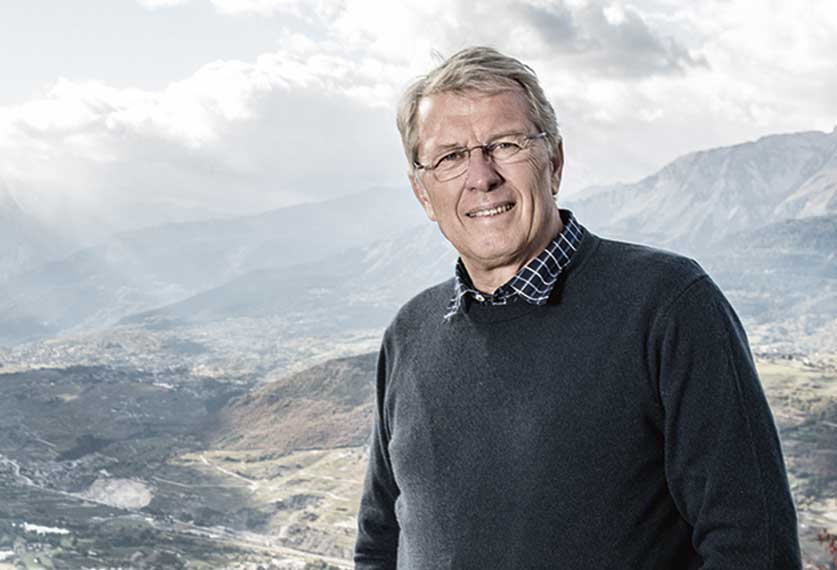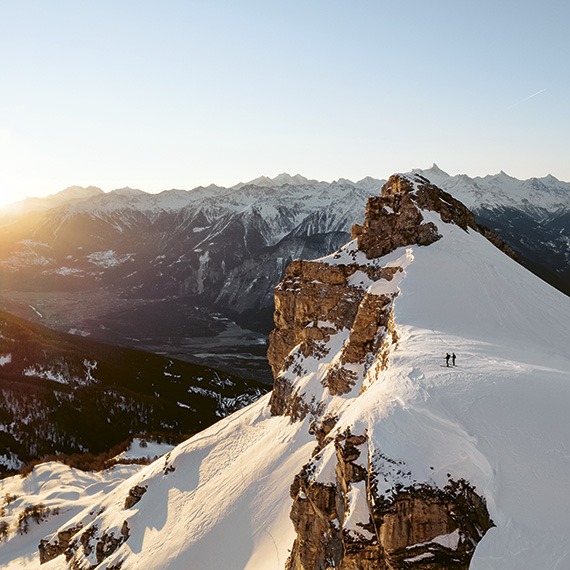
Eric Balet
The secrets of Verbier’s success
Verbier has not only resisted in what is a gloomy European ski market, it’s actually thriving. Eric-A. Balet, Téléverbier’s vice chairman in charge of business development, explains how.
The global ski market has been in the doldrums for the last few years, and Switzerland has not been immune to the downward trend. The number of ski days at the country’s resorts has dropped 26.7% since 2008/09, while some industry professionals fear that as many as 30% of resorts in French-speaking Switzerland will go out of business in the next three years, figures that would appear to herald the end of the golden age of winter sports. While skier numbers are falling and their spending habits are changing, resort owners are also having to contend with global warming, which is occurring twice as fast in the Alps than elsewhere in the world, leading to both reduced snow cover and a later start to winter. Yet, in spite of it all, Verbier is now the second most-visited resort in Switzerland after Zermatt. The freeride mecca posted turnover of CHF50m in 2016/17, a season in which it attracted a grand total of 1,159,000 skiers. So, what are the strategies that have enabled it to do more than just survive, and what does the future hold for the resort? Answering those questions for us is Eric-A. Balet, formerly the CEO of Téléverbier and now the company’s vice chairman in charge of business development.
While Verbier is generating as many ski days as it did in 2000, figures are well down in virtually every other area. How is that possible?
The number of ski days has fallen 12% since the 2008/09 peak of 1.3 million. William Besse (a former Swiss skier) sounded the alarm in 2010, telling us that fewer than 50% of schoolchildren in Bagnes had an annual pass, whereas the figure was 100% in his time. In response, we offered local children an annual pass at a reduced rate of CHF60, with CHF50 of that being paid for by the local authorities. We still managed to turn a profit, though, because their parents often came out to ski with them. This season we’re offering annual passes to under-25s for CHF400, while maintaining the same prices for other passes of this type. Satisfaction levels in terms of value for money are running at over 75%. And even if skier numbers are falling, it’s not necessarily all to do with prices. There are several other factors that come into play, like the fact babyboomers are giving up skiing, and people are flitting from one resort to another and from one activity to another. There are also fewer ski camps around because the cantons are experiencing financial problems, and we’ve got low-cost flights and video games competing with us too.
There are fewer international customers coming to Verbier than in the past. What are you doing to make up for that?
The strength of the Swiss franc has really hit us hard, and with sterling having halved in value we’ve lost around CHF3m in revenue from British tour operators since 2008. We’ve noted an almost direct correlation between the percentage of British customers and the value of the pound. Quite a few countries in Europe are having economic problems. We hardly see any Belgians here anymore, for example. So we’re looking to Nordic countries and across the Atlantic, where Verbier is better known than in German-speaking Switzerland. China could also be a productive market for us, if the government follows up on its plans
to get 300 million Chinese people on skis by 2026.
That Chinese market is appealing to say the least. How are you planning to break into it?
As regards China, for the time being we’re working as a team under the “Matterhorn region” label, which gives us more clout. Though the figures are pretty modest, we’re already attracting Chinese, Indian and even Brazilian guests, thanks in the main to the high-end ski camps at Les Elfes, which were pretty much fully booked right throughout the season. We’ve been working on the Chinese market for the last two
years, but we’re still at a stage where we need to earn the confidence of our future partners, because it’s partners we’re looking for, people who can make the most of our knowhow to launch resorts from A to Z in China. In return, we’d like them to help fund our major real estate projects. We’re also interested in Chinese skiers of course, but it’s going to be five to ten years before they start coming to Verbier in any
great numbers, because that’s how long it’ll take for them to become sufficiently good skiers. The important thing is to position ourselves in China right now and to make ourselves known. We’ve also signed a skier exchange partnership with the resort of Wanlong, in the province of Chongli, which is due to host the Winter Olympics. In the short-to-medium term, the Chinese market will have an especially important
role to play in developing our summer season. I think they might find the panoramic walkway we want to build at Mont- Fort in the next two to three years irresistible.
How are you dealing with global warming?
We’re fortunate in that we’re a high-altitude resort, so it’s a problem that affects us less than other resorts and less quickly too. We’re continuing to invest in mechanical snow making all the same. For the season ahead we’ve completely fitted out two runs at La Tzoumaz for a little under CHF5m, and we’re planning to invest ten million more in the next three years, including a hillside dam project on the La Chaux side. That will complete our system and we’ll need less than a week of cold weather to put snow on all the runs in question. In the meantime, we’ll also be continuing to upgrade our ski lifts. The Mont-Gelé cable car has been completely refurbished this season. We’re also hoping to build the Les Esserts-Savoleyres combimix cable car and chairlift, which will at long last provide a first-class link between La Tzoumaz and the rest of the domain.
Many resorts are looking to diversify. What’s Verbier doing in that respect?
We’re working on our summertime attractions, which now generate nearly CHF1.4m in turnover, compared to CHF600,000 just five years ago. Though that equates to more or less the same as a big weekend in winter, mountain biking and hiking have both got potential. We’re also looking to build hotels and holiday homes. We’ve invested in the T-One project at La Tzoumaz (a holiday home development with 490 beds), which should generate CHF1m in turnover thanks to the marketing of very carefully priced packages.
We’ve got a number of other projects in the pipeline, including one at Les Mayens de Bruson, in close collaboration with Bagnes Regional Council. We’re also looking at building new hotels on sites we own in Verbier and La Tzoumaz. And we’re planning to develop other non-winter sectors with a view to limiting our exposure to risk. Investing in ski lifts and nothing else would be just too unpredictable at a time
when we can no longer afford to lose 10% of our revenue.



















